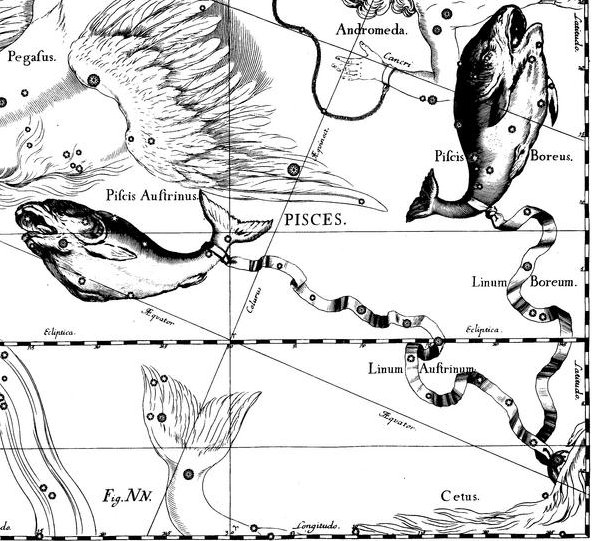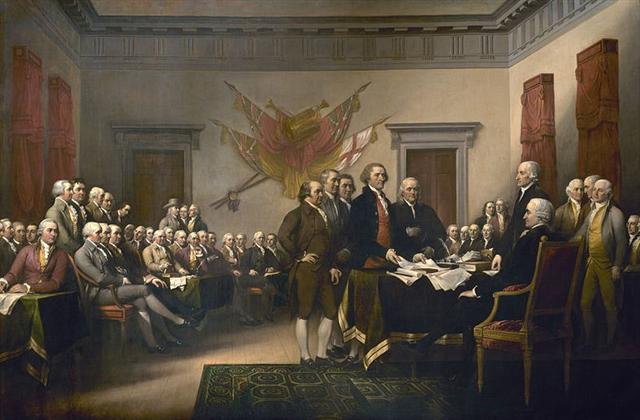Unfortunately there seems to be no Egyptian X sign incised
on the G
(Small Santiago) tablet. But we can compare with these glyphs
in the H (Large
Santiago) text:
|
307 |
 |
148 |
 |
191 |
594 |
 |
53 |
|
Ha6-28 (308 =
11 * 28) |
Ha9-8 (457)
|
Hb11-50
(1243) |
|
648 |
648 |
In order to distinguish the days of Mercury from the
days of Jupiter I have decided from now on to recolour them
accordingly. The middle of the week (weak) ought to be at
Mercury:
|
Mercury |
Jupiter |
Venus |
Saturn |
Sun |
Moon |
Mars |
|
1 |
2 |
3 |
4 |
5 |
6 |
7 |
|
8 |
9 |
10 |
11 |
12 |
13 |
14 |
|
15 |
16 |
17 |
18 |
19 |
20 |
21 |
|
22 |
23 |
24 |
25 |
26 |
27 |
28 |
|
Wednesday |
Thursday |
Friday |
Saturday |
Sunday |
Monday |
Tuesday |
|
29 |
30 |
31 |
32 |
33 |
34 |
35 |
|
36 |
37 |
38 |
39 |
40 |
41 |
42 |
|
43 |
44 |
45 |
46 |
47 |
48 |
49 |
|
50 |
51 |
52 |
53 |
54 |
55 |
56 |
|
57 |
58 |
59 |
60 |
61 |
62 |
63 |
|
64 |
65 |
66 |
67 |
68 |
69 |
70 |

|
LARGE
SANTIAGO (H) |
|
a1 |
50 |
50 |
burnt area could have
contained the number of glyphs below |
50 |
b1 |
*52 |
52 |
|
a2 |
58 |
108 |
108 |
b2 |
48 |
100 |
|
a3 |
52 |
160 |
160 |
b3 |
47 |
147 |
|
a4 |
56 |
216 |
216 |
b4 |
51 |
198 |
|
a5 |
59 |
275 |
275 |
b5 |
57 |
255 |
|
a6 |
64 |
339 |
*5 |
344 |
b6 |
54 |
309 |
|
a7 |
48 |
387 |
*3 |
395 |
b7 |
50 |
359 |
|
a8 |
46 |
433 |
*8 |
449 |
b8 |
*54 (?) |
413 |
|
a9 |
40 |
473 |
*13 |
502 |
b9 |
65 |
478 |
|
a10 |
49 |
522 |
*18 |
569 |
b10 |
67 |
545 |
|
a11 |
36 |
558 |
*22 |
627 |
b11 |
53 |
598 |
|
a12 |
*21 (?) |
*579 |
(*18) |
648 (?) |
b12 |
*50 (?) |
648 |
|
sum |
*648 |
sum |
*648 |

 |
Assuming - as the point for a possible start of
further
investigations - that Ha6-28 might correspond to
Ca6-28, we could find some reason for the absent top of
the Egyptian X.
Because 6-28 suggests June 28 and twice 3.14 = 6.28 suggests the completion of
a cycle - and maybe there was an idea of a causal
relation-ship with a preceding man fallen on his
face:
... If, in the silence of the
night, you should hear noises as of falling leaves
and flowers, and afterward as of heavy fruit
dropping to the ground, you will know that my prayer
has been granted: the life of our little boy will be
saved.' And having said that, Ulu fell on his
face and died. His wife
sang a dirge of lament, but did precisely as she was
told, and in the morning she found her house
surrounded by a perfect thicket of vegetation.
'Before the door,' we are told in Thomas Thrum's
rendition of the legend, 'on the very spot where she
had buried her husband's heart, there grew a stately
tree covered over with broad, green leaves dripping
with dew and shining in the early sunlight, while on
the grass lay the ripe, round fruit, where it had
fallen from the branches above. And this tree she
called Ulu (breadfruit) in honor of her
husband. The little spring was concealed by a
succulent growth of strange plants, bearing gigantic
leaves and pendant clusters of long yellow fruit,
which she named bananas. The intervening space was
filled with a luxuriant growth of slender stems and
twining vines, of which she called the former
sugar-cane and the latter yams; while all around the
house were growing little shrubs and esculent roots,
to each one of which she gave an appropriate name.
Then summoning her little boy, she bade him gather
the breadfruit and bananas, and, reserving the
largest and best for the gods, roasted the remainder
in the hot coals, telling him that in the future
this should be his food. With the first mouthful,
health returned to the body of the child, and from
that time he grew in strength and stature until he
attained to the fullness of perfect manhood.
He became a mighty warrior in those days, and was
known throughout all the island, so that when he
died, his name, Mokuola, was given to the
islet in the bay of Hilo where his bones were
buried; by which name it is called even to the
present time ...

|
JULY 3 |
4 (185 = 535 - 350) |
5 |
6 |
7 |
...
July 4 is the 185th day of the year
(186th in leap years) in the Gregorian
calendar. There are 180 days remaining
until the end of the year. The Aphelion,
the point in the year when the Earth is
farthest from the Sun, occurs around
this date ...
|
 |
 |
 |
 |
 |
|
Cb6-27 |
Cb6-28
(392 + 143) |
Cb6-29
(536) |
Cb7-1
(145) |
Cb7-2 |
| kua tupu
te kihikihi |
ku kikiu |
te henua |
Te
hokohuki |
te moko |
Kihikihi, lichen;
also: grey, greenish grey, ashen.
Vanaga. Kihikihi, lichen T, stone
T. Churchill. The
Hawaiian day was divided in three
general parts, like that of the early
Greeks and Latins, - morning, noon, and
afternoon - Kakahi-aka, breaking
the shadows, scil. of night;
Awakea, for Ao-akea, the
plain full day; and Auina-la, the
decline of the day.
The lapse of the
night, however, was noted by five
stations, if I may say so, and four
intervals of time, viz.: (1.) Kihi,
at 6 P.M., or about sunset; (2.) Pili,
between sunset and midnight; (3) Kau,
indicating midnight; (4.) Pilipuka,
between midnight and surise, or about 3
A.M.; (5.) Kihipuka,
corresponding to sunrise, or about 6
A.M. ... (Fornander)
Tupu.
1.
Shoot, sprout, bud; to sprout, to bud. 2.
Pregnant: vî'e tupu (o te poki); to
be conceived (of fetus in its mother's
womb): he-tupu te poki i roto i te kopú o
toona matu'a. Vanaga. To grow, to
sprout, to germinate, to come forth, to
conceive, pregnant, germ; mea tupu,
plant; tupu ke avai, of rapid growth;
tupu horahorau, precocious;
hakatupu, to produce, to stimulate
growth, to excite. P Pau.: fakatupu,
to raise up, to create. Mgv.: tupu,
to grow, to conceive, to be pregnant. Mq.:
tupu, to grow, to sprout, to
conceive. Ta.: tupu, to grow, to
sprout. Churchill. Mgv.: Tupu, the
best or worst, used of men or of bad
qualities. Sa.: tupu, king. Ma.:
tupu, social position, dignity.
Churchill.

Kikiu. 1. Said of food insufficiently
cooked and therefore tough: kai kikiu.
2. To tie securely; to tighten the knots of
a snare: ku-kikiu-á te hereíga, the
knot has been tightened. 3. Figuratively:
mean, tight, stingy; puoko kikiu. a
miser; also: eve kikiu. 4. To squeak
(of rats, chickens). Kiukiu, to chirp
(of chicks and birds); to make short noises.
The first bells brought by the missionaries
were given this name. Vanaga. Kiukiu
(kikiu). 1. To resound, to ring,
sonorous, bell, bronze; kiukiu rikiriki,
hand bell; tagi kiukiu, sound of a
bell; kikiu, to ring, the squeeking
of rats; tariga kikiu, din, buzzing;
hakakiukiu, to ring. Mgv.: kiukiu,
a thin sound, a soft sweet sound. 2. To
disobey, disobedience; mogugu kiukiu,
ungrateful; ka kikiu ro, to
importune. Churchill. |
|
CLOSE TO THE SUN: |
|
'Aug 9 |
10 (222 =
185 + 37) |
11 |
12 |
13 (225) |
|
AL SHARAS (The Ribs) =
β
Crateris
(168.6) |
Al Zubrah-9 (Mane) /
Purva Phalguni-11 (First Reddish One - Fig
Tree)
ZOSMA (Girdle, not Belt)
=
δ
Leonis
(169.2),
COXA (Hips)
=
θ
Leonis
(169.4)
*169.4 - *41.4 = *128.0 |
φ
Leonis (170.0),
ALULA (First Spring of the Gazelle)
=
ξ,
ν
Ursae Majoris
(170.5),
LABRUM =
δ
Crateris
(170.6) |
σ
Leonis (171.1),
λ
Crateris (171.6),
ι
Leonis,
ε
Crateris (171.9) |
γ
Crateris, π
Centauri (172.0),
κ
Crateris (172.5),
τ
Leonis (172.8)
GREDI
(α Capricorni) |
|
... God created Eve from
one of Adam's ribs and therefore I at first
tried to translate the female (β)
star name Al Sharas with The Rib.
Although according to Allen this star was
plural: '... β ...
was one of Al Tizini's Al Sharāsīf,
the Ribs, - i.e. of the Hydra, - and the
first of the set.' Adam had, as I remember
it, another wife before Eve, viz. Lilith
...
 |
|
CLOSE TO THE FULL MOON: |
|
'Febr 8 |
9 (40 =
405 - 365) |
10 |
11 |
12
(408) |
|
23h (350.0 = 167.4 + 182.6)
υ, θ Gruis (350.0), π Cephei (350.6), ι
Gruis (350.9) |
SIMMAH = γ Piscium
(351.7) |
φ Aquarii (352.0), ψ Aquarii (352.4), χ
Aquarii (352.6), γ Tucanae (352.8) |
CROSS-BARS |
|
ο Cephei (353.3),
KERB
(Bucket Rope)
= τ Pegasi
(353.6) |
κ Piscium (354.2), θ Piscium (354.4), υ
Pegasi (354.9)
*313.0 = *354.4 - *41.4 |
|
The name Simmah for
γ
at the corner of the mouth of the Southern
Fish suggests the Tamil name Simham
for the Lion → Simba, Singha,
Singapore ('City of the Lion').

...
τ, 4.5, with
υ, was Al Sufi's
Sa'd al Na'amah, which Knobel thinks
should be Al Na'āim, the Cross-bars
over a well; but they also were known as
Al Karab, the Bucket-rope. The usual
titles for τ -
Markab and Sagma or Salma
- are from Bayer, but the last two should be
Salm, a Leathern Bucket
...

... With
α
Andromedae [Sirrah → Navel] and
γ
Pegasi [Kerb], as the Three Guides,
it [Caph → Phoenician Kaph, Hand] marks the
equinoctial colure, itself exceedingly close
to that great circle; and, being located on
the same side of the pole as is Polaris, it
always affords an approximate indication of
the latter's position with respect to that
point. This same location, 32º from the
pole, and very near to the prime meridian,
has rendered it useful for marking sidereal
time. When above Polaris and nearest the
zenith the astronomical day begins at 0
hours, 0 minutes, and 0 seconds; when due
west the sidereal time is 6 hours; when
south and nearest the horizon, 12 hours, and
when east, 18 hours; this celestial
clockhand then moving on the heavenly dial
contrary to the motion of the hands of our
terrestrial clocks, and at but one half the
speed ... |
At this place, we can imagine, the Lion became weak
(week) - 'turned into water' so to say:
.jpg)

.jpg)

... The canoes of Ava Rei Pua
and of Hotu were seen near the (off-shore)
islets. On the fifteenth day of the month of October (tangaroa
uri) the canoe of Hotu and the canoe of
Ava Rei Pua landed. On the fifteenth day of the
month of October (tangaroa uri), Nonoma
left the house during the night to urinate outside. At
this point Ira called out to Nonoma, 'Look
at the canoe!' Nonoma ran, he quickly went to
Te Hikinga Heru (a ravine in the side of the crater
Rano Kau) and looked around. There he saw the
double canoe way out near the (offshore) islets, and the
two (hulls of the canoe) were lashed together. He ran
and returned to the front of the house. He arrived and
called into the house: 'Hey you! This canoe has arrived
during the night without our noticing it!' Ira
asked Nonoma, 'Where is the canoe, which you say
is lying out there (in the water)?' Nonoma's
voice came back: 'It is out there (in the water) close
to the (offshore) islets! There it lies, and the two
(hulls) are lashed together.' The four of them
(corrected for 'the six of them') went out and picked up
leaves (on branches) to give signals. They picked them
up, went and arrived at Te Hikinga and saw the
canoe. Raparenga got up, picked up the leaves,
took them in his hands, and waved, waved, waved, waved
... [E:75]
The 15th day
of October (288) was the same day as that which the Pope Gregory XIII
had chosen for the beginning of his new calendar.
... Gregory dropped 10 days to bring the
calendar back into synchronisation with the seasons.
Accordingly, when the new calendar was put in use, the
error accumulated in the 13 centuries since the Council
of Nicaea was corrected by a deletion of ten days. The
Julian calendar day Thursday, 4 October 1582 was
followed by the first day of the Gregorian calendar,
Friday, 15 October 1582 (the cycle of weekdays was not
affected)
...
... If summer is defined from the equinoxes there
will be 185 days in the northern summer and 180 in
the southern summer:
|
March |
21 |
80 |
0 |
|
31 |
90 |
10 |
|
April |
30 |
120 |
40 |
|
May |
31 |
151 |
71 |
|
June |
21 |
172 |
92 |
|
30 |
181 |
101 |
|
July |
31 |
212 |
132 |
|
Aug |
31 |
243 |
163 |
|
Sept |
22 |
265 |
185 |
|
30 |
273 |
193 |
|
Oct |
15 |
288 = 172
+ 4 * 29 |
208 |
|
30 |
304 |
224 |
|
Nov |
30 |
334 |
254 |
|
Dec |
21 |
355 |
275 |
|
31 |
365 |
285 |
|
Jan |
31 |
31 |
316 |
|
Febr |
28 |
59 |
344 |
|
March |
21 |
80 |
365 |
|
31 |
90 |
375 = 365
+ 10 |
|
April |
30 |
120 |
405 = 365
+ 40 |
|
May |
31 |
151 |
436 = 365
+ 71 |
From winter solstice to summer solstice north of the
equator there are (365 - 355) + 172 = 182 days. From
summer solstice to winter solstice there are 355 -
172 = 183 days ...

|













.jpg)

.jpg)

